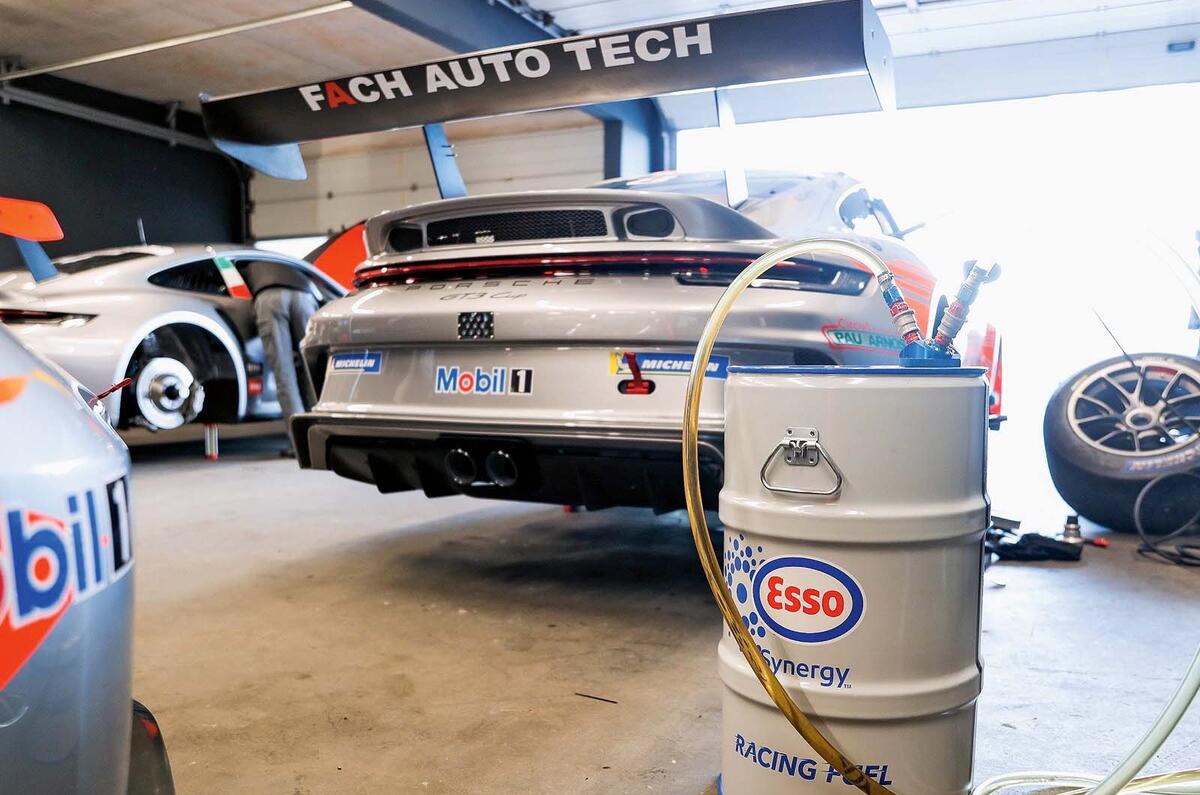Porsche and partners are on track with the production of e-fuel at the Haru Oni demonstration plant in Chile.
The next step is to develop the direct air capture technology (DAC) from the atmosphere to make production as sustainable as possible.
DAC captures CO2 from the atmosphere to combine with green hydrogen made at the plant using electrolysis powered by wind-generated energy. The hydrogen and CO2 are combined in a synthesis process to make methanol, which is further processed to produce the e-fuel.
The e-fuel we’re interested in is a synthetic petrol that is chemically equivalent to fossil-fuel petrol, but it can also be formulated as aviation jet fuel. The fuel can be used with existing engines and, if it were to make large-scale production in the future, could be supplied using the existing infrastructure and filling station forecourts.
Initially, the Haru Oni plant, which started production earlier this year, used CO2 produced from biomass, so the process is still CO2-neutral because the plant matter used absorbed CO2 while growing.
Getting CO2 from DAC is more straightforward because the processing of biomass is removed from the equation. It’s also flexible because DAC plants can be set up anywhere and it can be scaled up to make the large volumes of gas needed for mass production of the green fuel.
The first stage in extracting CO2 from the atmosphere is to clean the air to remove large particles of dirt, before passing it through a filter material, which traps (adsorbs) the CO2. Once that’s done, the CO2 is extracted by heating the material, leaving just water as a by-product.
Electricity for the entire process is produced by a 3.4GW Siemens Gamesa wind turbine. A Siemens Energy electrolyser (working like a hydrogen fuel cell in reverse) produces pure hydrogen by splitting water into hydrogen and oxygen, and the same wind-generated electricity will also drive the DAC plant. Waste heat from the electrolysis is captured and used in the CO2 extraction process.
The finished synthetic fuel still contains carbon, which is released when the fuel is used, but the carbon isn’t fossil-based so the process is circular and sustainable. CO2 emitted into the atmosphere came from the atmosphere, but synthetic fuel doesn’t remove existing CO2 from the equation altogether.
There are already a number of DAC projects in operation around the world, and apart from making synthetic fuel, it can also be used as a raw material to make non-fossil-based plastics.
Although the project shows huge potential, it’s likely to remain a rarity, according to a report by the Potsdam Institute for Climate Impact Research released earlier this year.
It estimates the production cost of fuel produced initially at the £60 million pilot plant to be around £43 per litre but at industrial scale sees that dropping to as little as 86p per litre. However, that’s still twice the wholesale cost of petrol.




Join the debate
Add your comment
If it costs that much, why are they wasting the development money on something nobody can afford.?
The process of direct conversion of coal to synthetic fuel originally developed in Germany. Friedrich Bergius developed the Bergius process, which received a patent in 1913 and was used extensively by the Nazis during WWII
All that cost, creation, transport etc when you could just put the electricity into the current grid. People mention the initial cost of BEV but then at a whooping £43 pound a litre only Porsche owners could afford it. Maybe a niche product for race cars but it still be pumps out fumes from the tail pipe and will be way behind a BEV on efficientcy and clean running.
I don't see them as competing technologies, rather complementary - so why not do both. The grid isn't yet ready for a wholesale switch to EVs and why not continue to use some of our existing vehicles in a more sustainable way?
Not sure why this keeps popping up, National Grid have stated many time they DO HAVE capacity for electric car charging, even if it happened overnight, which it won't.The the biggest driver [according to Nat Grid] leading to a drop in electricity usage over the last 10 years was the move the LED lightbulbs! This is before we talk about local battery storage in homes and car to grid technology, both of which can time shift peak demand, and reduce a users electricity spend. Futures bright from what I've read.
For me E-fuels seem best suited for exotics, keeping the v8/10/12's alive and noisy. They do low milage and the owners are generally very well off.
A well reasoned comment from somebody who obviouslyknows the situation. Can you tell me how much of the National Grid's capacity is used in producing petrol, diesel and other products from crude oil?
There seems to be A LOT of EV fear-mongering going on in the press, The Sun, Telegraph, Times & Daily Mail all publish many- "EV car Disaster" - "I HATE my EV" clickbait stories, all very light on fact interestingly if you bother to read, the content of the story very often contradicts what is stated in the headline!
To answer your question - it's not simple (Elon Musk quoted a figure a while back that looks too high and I'd suggest overstating the amount).
American but the GM/Argonne National Laboratories well to tank and well to wheels studies show that for cars -- well to petrol tank, petrol is about 81 to 83% source energy efficient.
IN the numbers is looks like about 15% of the 'production loss' above is electricity so about 2.5% of the overall production energy 'cost' is derived directly from electricity - however it's too much for me to put a gigawatt figure too! So I'd suggest petrols EV consumption is not a game changer but worth having back in the grid.